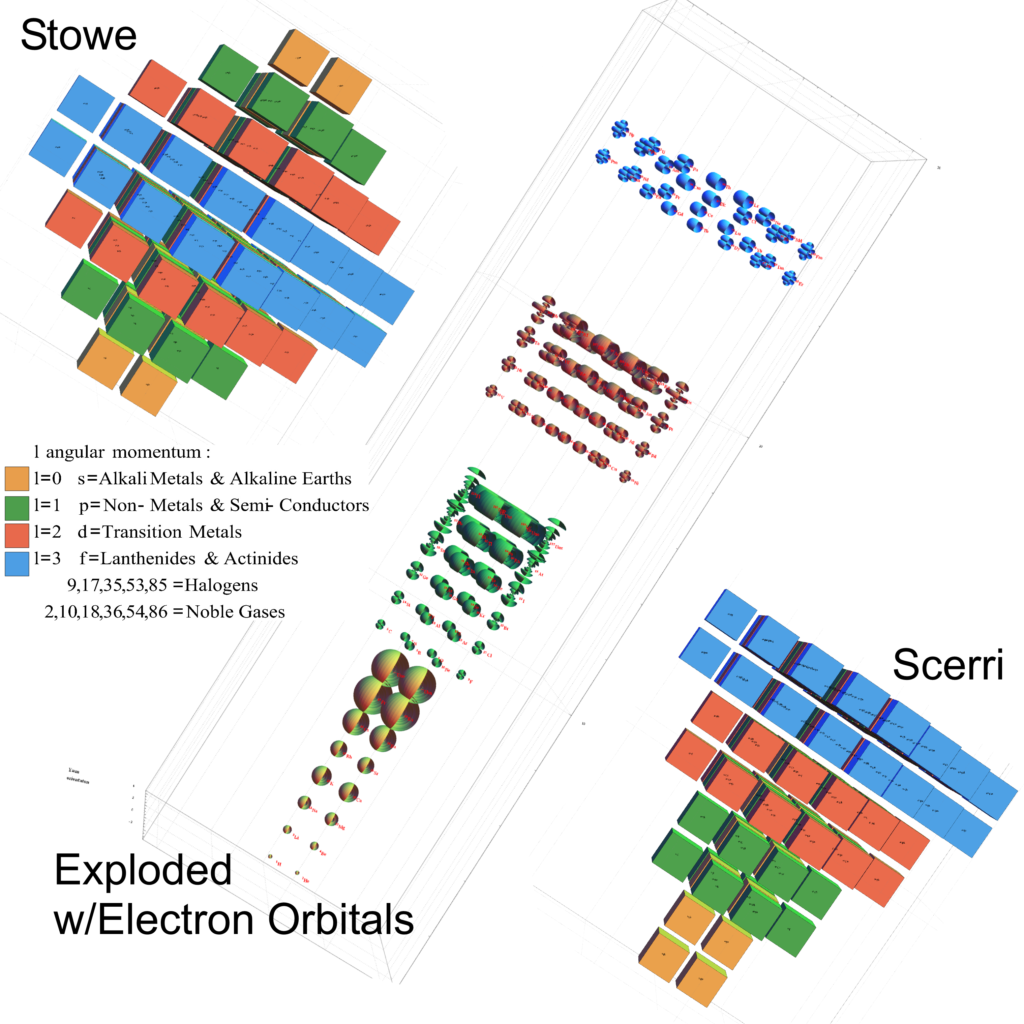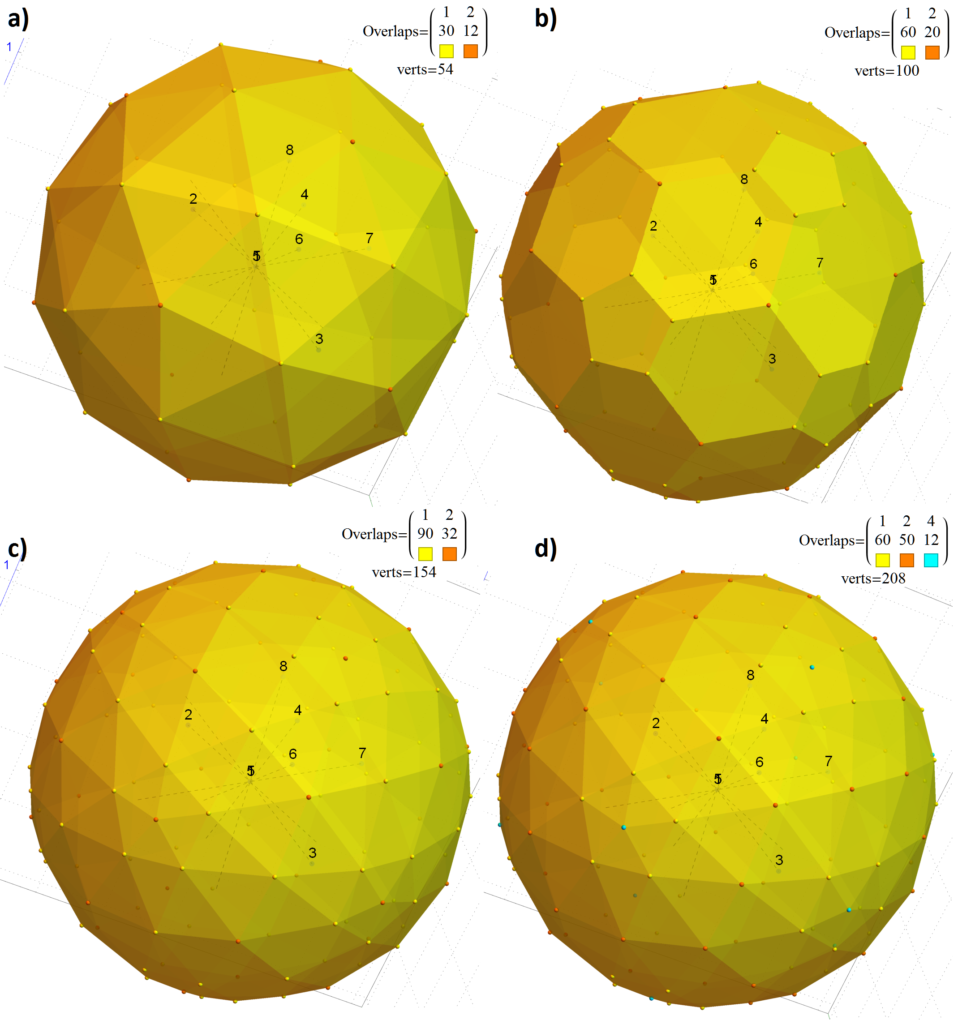This is a link to the free cloud Mathematica demonstration. (Note: You need to enable “Dynamic Behavior” aka. interactivity in the upper left corner).

Please bear in mind that this demonstration is written for a full Mathematica licensed viewer. The cloud deployments are limited in interactivity, especially those that involve 3D and significant computation. Also, be patient – it takes a minute to load and more than a few seconds to respond to any mouse click interactions.
The utility of the cloud demo of this 4D (3D+color) Periodic Table is in visualizing it in 2D or 3D (from the left side menu) and building up n=1 to 8. Select the Stowe vs. Scerri display for different 3D models. The explode view slider helps distribute the lattices in the model.
The 2D/3D electron density representations for each atom’s orbitals are too slow for the cloud, so they don’t show anything. The isotope and list-picker of internet curated element data also does not function.
For an explanation of this pane #10 in the suite of 18 VisibLie-E8 demonstrations, please see this link.


A Theory of Everything Visualizer, with links to free Cloud based Interactive Demonstrations:
1) Math: Chaos/Fibr/Fractal/Surface: Navier Stokes/Hopf/MandelBulb/Klein
2) Math: Number Theory: Mod 2-9 Pascal and Sierpinski Triangle
3) Math: Geometric Calculus: Octonion Fano Plane-Cubic Visualize
4) Math: Group Theory: Dynkin Diagram Algebra Create
5) Math: Representation Theory: E8 Lie Algebra Subgroups Visualize
6) Physics: Quantum Elements: Fundamental Quantum Element Select
7) Physics: Particle Theory: CKM(q)-PMNS(ν) Mixing_CPT Unitarity
8) Physics: Hadronic Elements: Composite Quark-Gluon Select Decays
9) Physics: Relativistic Cosmology: N-Body Bohmian GR-QM Simulation
10) Chemistry: Atomic Elements: 4D Periodic Table Element Select
11) Chemistry: Molecular Crystallography: 4D Molecule Visualization Select
12) Biology: Genetic Crystallography: 4D Protein/DNA/RNA E8-H4 Folding
13) Biology: Human Neurology: OrchOR Quantum Consciousness
14) Psychology: Music Theory & Cognition: Chords, Lambdoma, CA MIDI,& Tori
15) Sociology: Theological Number Theory: Ancient Sacred Text Gematria
16) CompSci: Quantum Computing: Poincare-Bloch Sphere/Qubit Fourier
17) CompSci: Artificial Intelligence: 3D Conway’s Game Of Life
18) CompSci: Human/Machine Interfaces: nD Human Machine Interface


























